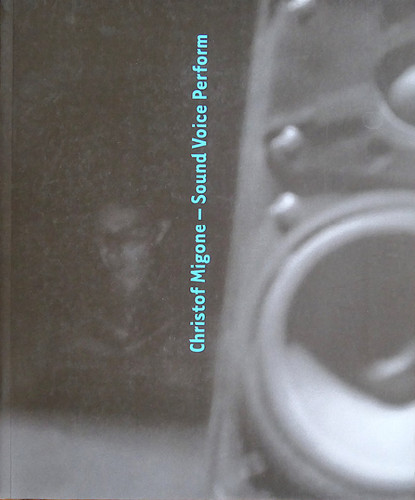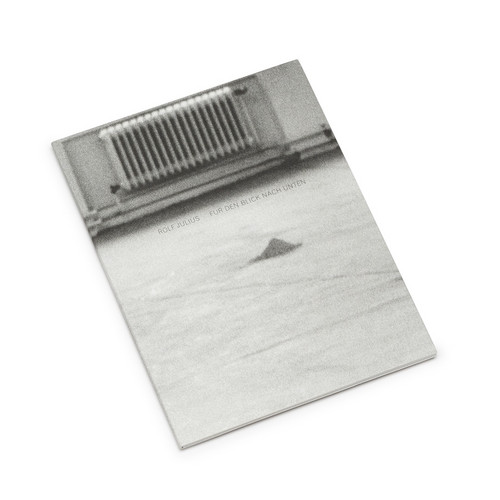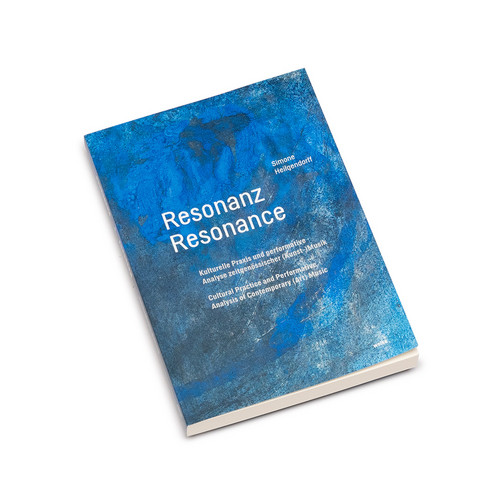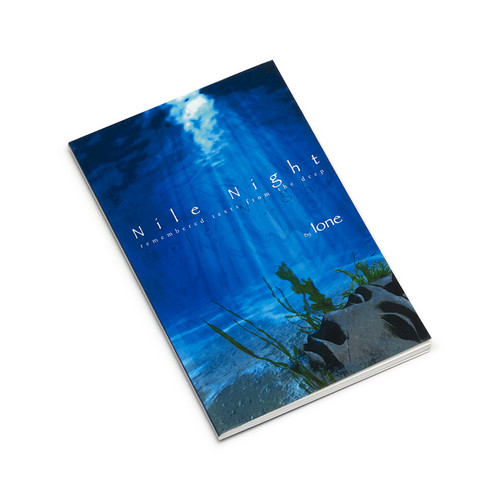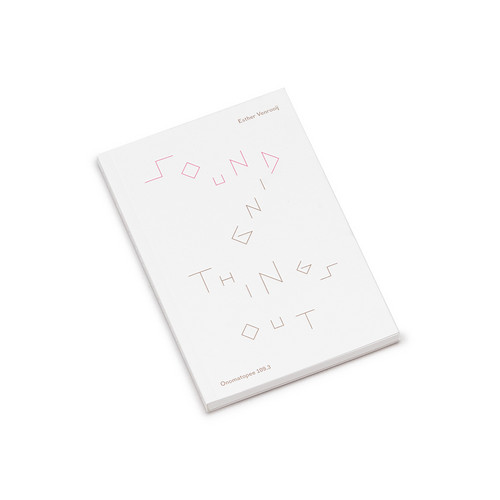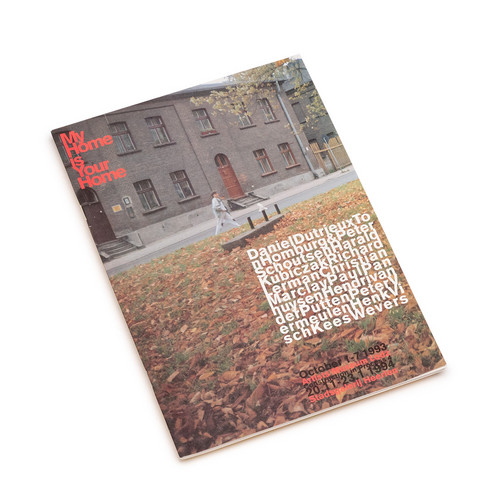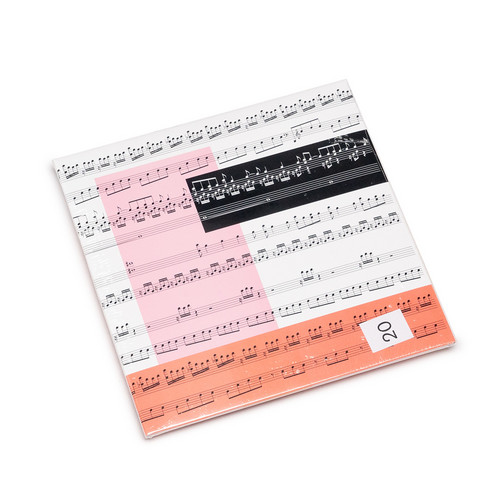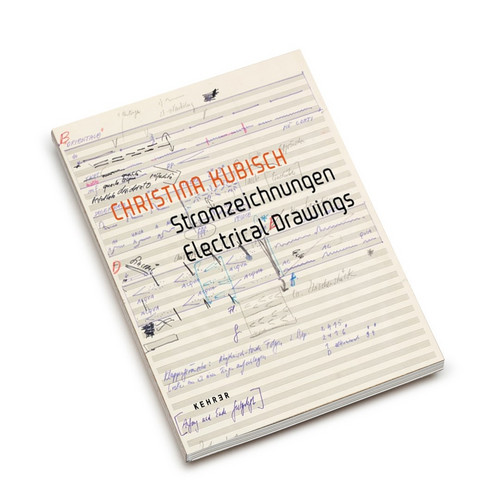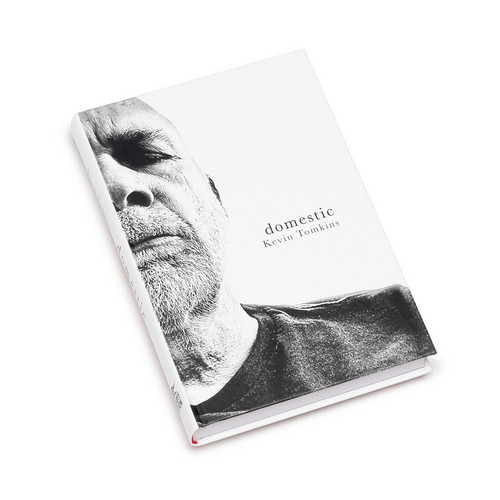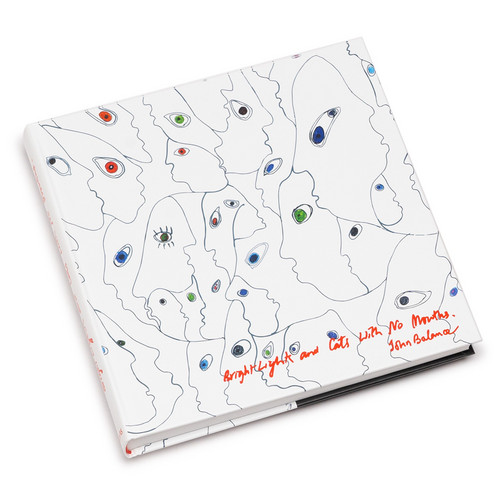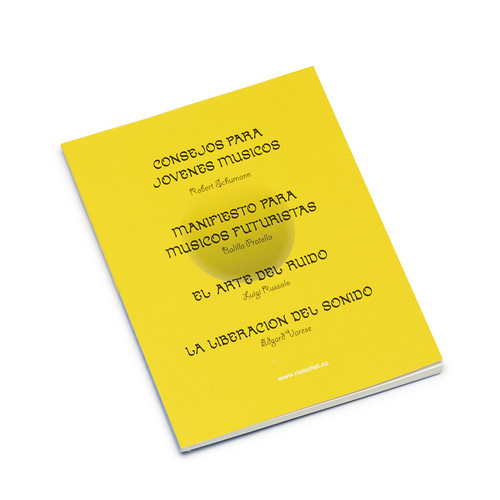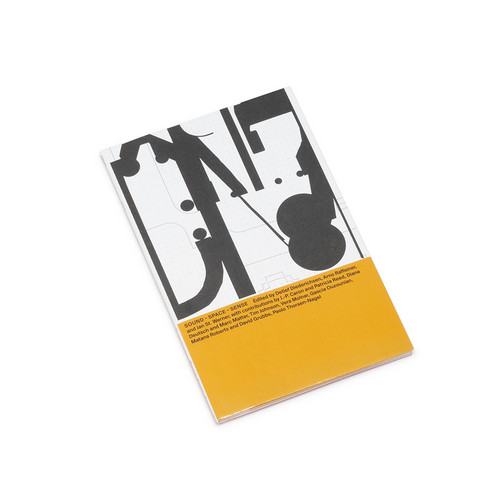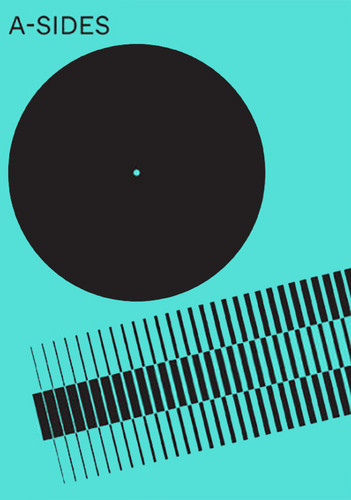Back in stock
Sound Voice Perform (Book+CD)
*2022 stock* Christof Migone's Sound Voice Perform documents the performance, sound, and video works of the Canadian artist. Working since the mid-80s, Migone weaves together a multitude of media, from radio to telephones to digital objects, to form a stunning and highly dynamic practice. Combining an acute sonic sensibility with performative usages of the body, video, and the voice, his work engages corporeal presence with a subtle invasion, unsettling speech and gesture through investigative a…
Für den Blick Nach Unten (Book)
German/English. First edition. Softcover. 36 pages. Exhibition catalog for a show that ran March 11 through April 22, 2007. From the exhibition press release Rolf Julius is one of the most important representatives of contemporary sound art. His nuanced, mostly small-format sound installations explore the visibility of sounds, the audibility of images and the aesthetic and ontological potential of silence in the most subtle way. Since the 1960s, Julius, a constant border crosser between music a…
Resonance: Cultural Practice and Performative Analysis of Contemporary (Art) Music
Bilingual Edition English/German This inspiring book, with texts in German and English, reflects on the aesthetic, cultural and performative dimensions of contemporary (art) music. It opens up and challenges new perspectives in musicological and artistic research with a cultural studies orientation. Texts from the last 15 years are divided into two main chapters: Cultural Practice – including analyses of major festivals such as Warsaw Autumn, Festival d’Automne à Paris and Wien Modern, the impor…
Nile Night: Remembered Texts from the Deep
Nile Night is a lovely new book of poems that also includes a cd of readings by Ione and music by Pauline Oliveros. 'Nile Night: Remembered Texts from the Deep' will move your mind with sounds, sensations and feelings; arousing your dreams and taking you far into that fabled land of Egypt. How fortunate for me that I shared one of these journeys with Ione and can find my own memories amplified as I dive into the depths of these writings. What an enrichment to have these poetic texts and to keep …
Sounding Things Out: A Journey through Music and Sound Art
2024 stock. Sound is ephemeral. It does not belong to anyone. It cannot be captured in words. Writing on sound art usually focuses on the same familiar figures, but this treatment will broaden the field to explore artistic practitioners like the godfather of movie sound, Walter Murch, the king of the jungle Chris Watson, naturalist and explorer Alexander von Humboldt, pioneer wildlife recordist Ludwig Karl Koch, American pioneer composer and master teacher James Fulkerson, uncompromising compose…
My Home is Your Home (Book)
Catalog published in conjunction with Construction in Process IV - The Artist Museum, Łódź, Poland and Stadsgalerij Heerlen, Netherlands, 1993/1994. This publication documents the fourth edition of the legendary international art project Construction in Process, organized under the evocative title My Home is Your Home. The exhibition brought together an extraordinary constellation of international artists working at the intersection of installation, sound art, and experimental music.
Featured ar…
Costruzione dell'Universo
*Bilingual Edition Italian/English* Costruzione dell'Universo: Artists’ Magazines and Publications after Marcel Duchamp is a research project that gathers artists’ magazines and publications by various artists who were active in the realm of “periodical and irregular” printed matter from the 1950s to the present day, beginning with of the work of the visionary artist Marcel Duchamp. This significant and hitherto overlooked sector of artistic production explores the dimension of the newspaper and…
Editions And Multiples 1967/2016
Focusing on Italian contemporary (sound) artist Maurizio Nannucci's practice, this book offers for the first time a comprehensive overview of his extraordinary creativity as publisher and producer of editions and multiples, as well as artists’ books, catalogs, prints, photographs, posters, records, and more. His field of research has expanded since the 1960s, exploring language and the intersection of disciplines such as linguistics, literature, music, sound poetry, philosophy, and archite…
An Hour for Piano
Edition of 80. Written in 1971, Tom Johnson's An Hour for Piano stands as a landmark of American minimalism, born from improvisatory sketches Johnson created in 1967 while accompanying a modern dance class at New York University. Johnson gradually expanded these sketches, creating a composition designed to be performed in exactly one hour at an absolutely steady tempo of quarter note = 59.225 beats per minute. Deceptively simple in its construction, An Hour for Piano comprises six basic textures…
Stromzeichnungen (Book)
* 2024 Stock * Christina Kubisch is one of the pioneers of sound art, with numerous sound installations, performances and compositions to her credit, along with an extensive body of accompanying material that actually forms the springboard for her work. Included are drawings, visual musical scores and text and image sketches from the last 35 years, most of which have never before been shown. Topics treated include architecture, acoustics, the composition process, electronic sound generation, ele…
Advertisements 1971/1972 (Book)
2024 stock Actionist, maker of objects, writer and graphic artist Dieter Roth created an exceptionally diverse and convoluted oeuvre. In Lucerne he published a series of small ads twice weekly in the newspaper «Anzeiger Stadt Luzern und Umgebung», consisting of an aphorism and signed by his initials. Embedded in advertisements from «real» life, these ads conjured the surreal, subversive side of existence as in statements like «A good beginning is an evil end», «A tear is as evil as a good word» …
Tears In Lucerne (Book)
2024 stock Dieter Roth left his mark in Lucerne: close, long-standing friendships and traces in his works. Tränen in Luzern (Tears in Lucerne) complements the volume Inserate 1971/1972 with material for the original version of the Tränenmeer (Sea of Tears) project that – with its instalments and different stages of development – counts as one of Roth’s major literary projects. An in-depth essay by Stefan Ripplinger places Tränenmeer within Roth’s œuvre as a whole, and an entertaining interview …
Domestic (Book)
English edition, hardcover, 292 pages. A relentless and unflinching collection, Domestic assembles the lyrics and texts of Kevin Tomkins-founding member of Sutcliffe Jugend and a key figure in the UK power electronics scene. Raw, brutal, and unapologetically intimate, this book lays bare the psychological terrain of control, submission, and the darkest corners of human desire and detachment.
Divided into six visceral sections, Domestic shatters societal norms, piercing through the polite veneers…
Bright Lights and Cats with No Mouths
The re-release of the much-sought-after art book by Coil's John Balance—the first ever extensive overview of his drawings, paintings and sketches—in a reformatted and largely redesigned edition. The artworks featured in the book are both finished elaborate hallucinatory pieces as well as quick sketches with a good sprinkling of Balance's often underestimated humour. Homages to idols and inspirations next to idiosyncratic magical dreamscapes executed in a wide variety of styles and mediums. This …
Sound Studies and Sonic Arts Reader (Book)
Sound Studies and Sonic Arts is a postgraduate program of the Berlin University of the Arts. Since 2017, the program has served to deepen the theoretical and practical skills in sound-related theory and practice, particularly in cultural studies, musicology, aesthetics, sound art, sound design, and media production. It evolved from the program Sound Studies – Akustische Kommunikation which was established in 2005.While the Master’s program Sound Studies and Sonic Arts pairs theoretical discussio…
R. Schumann, Balilla Pratella, Luigi Russolo, Edgard Varese
Spanish/English edition. 85 pages, edition of 50 copies. A compilation of seminal texts for the young electronic musician. Perfect bound / ByW /
R. Schumann - Consejos para Jóvenes Músicos
Balilla Pratella - Manifesto para Músicos Futuristas
Luigi Russolo - El Arte del Ruido
Edgard Varese - La Liberación del Sonido
Sound – Space – Sense (Book)
People perceive audio events in very different ways. There is still a great deal of uncertainty about the physics, biology, signifiers, and unconscious processes on the basis of which auditory experiences are constructed. The book applies the methods of artistic research to convey a sense of how mental space, social practice, and the direct experience of sound relate to each other and how connections are generated between these levels—a topology of resonances, reflections, and vibrations in perp…
A-sides – A cosmology of audio editions by Artists
Art & vinyl: an analytic anthology of artist's records in Switzerland. Since the beginning of its existence, the record has always been used by visual artists as a form of distribution for their sound practice. First experimented with by the early avant-garde movements, the role of these sound supports was later redefined in the context of the proliferation and hybridization of forms between sound and language. While recording media such as discs or cassettes were used to document happenings, r…
Good Night Good Morning (Book)
A comprehensive retrospective of work from one of the foremost performance artists to emerge from the 1970s. Since her earliest performances in the late 1960s, Joan Jonas has concerned herself with animation and moving images, asking what it means to move images, or to be moved by them. The artist constantly returns to her ever-expanding archive of images, sounds, gestures, ideas and places, reworking materials into new forms across the decades. Published in conjunction with the artist’s most co…
Inaudible, Invisible (Book)
An incursion into a major field of work by Christina Kubisch, a pioneer of sound art who has been exploring the sonic potential of electromagnetic fields generated by our urban and technological environment since the 1970s. This book is part of a series of monographic publications co-published with the Espace multimédia Gantner devoted to women artists in connection with technology. Christina Kubisch (born 1948 in Bremen, lives and works in Hoppegarten, Germany) studied painting, music and elect…
